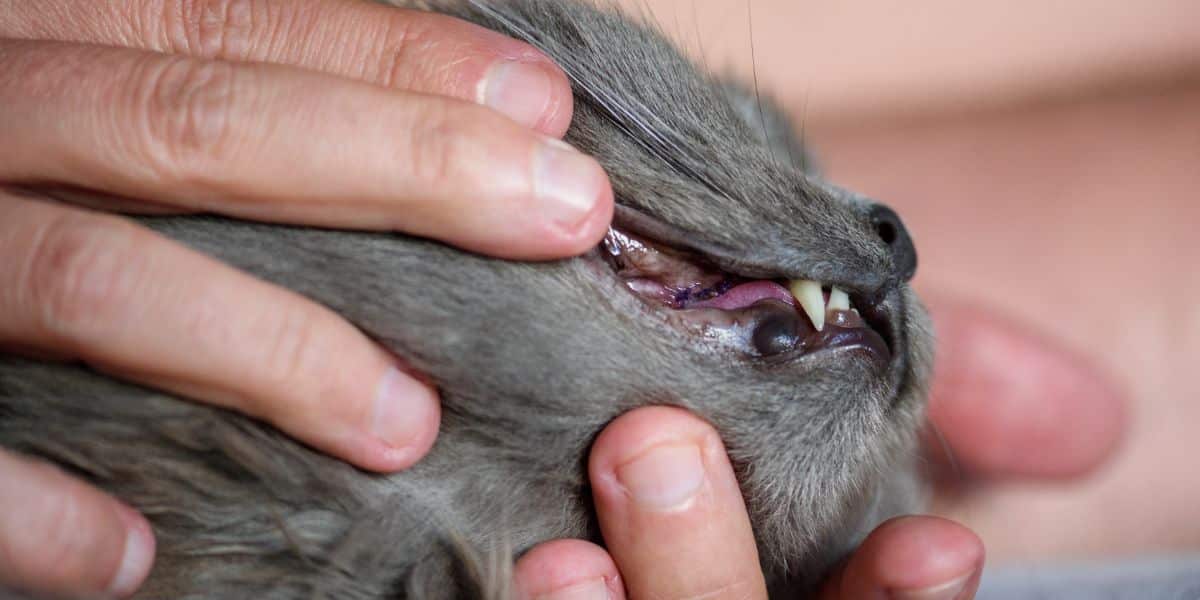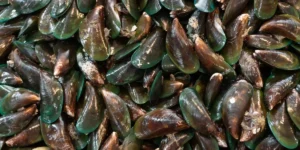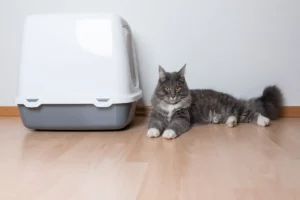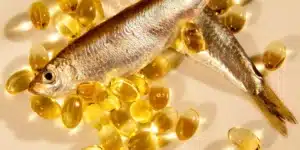At Veto Companion, we know how important it is to preserve the dental health of our animals. This is why we have developed a range of dental hygiene products for dogs and cats.
Table of Contents
ToggleWhat is gingivitis in the cat?
Gingivitis is an inflammation of the gumsfrequent in the cat. It is caused by dental plaque accumulation and Tartar on teeth, which irritates the gums and may cause redness1 swelling, bleeding or bad breath.
If not treated, gingivitis may develop in periodontitis, a deeper infection of tooth support tissue. Gingivitis is therefore a common problem in the cat that must be quickly detected and treated before complications occur. To try to rid your cat of this oral condition, it is essential to understand its causes.
What are the causes of gingivitis?
To treat gingivitis in cats, it is important to determine the cause. In fact, this will allow you to react better to treating your companion. Among the common causes of this oral condition are:
• Accumulation of plaque and tartar The plaque is formed from food debris and bacteria. Over time, it hardens and becomes tartar. These deposits irritate the gums and cause inflammation.
• Lack of oral hygiene : if the cat's teeth are not brushed regularly, the plate accumulates more easily.
• Dental defects Some breeds of cats like Persian are more likely to have dental malpositions that favour plaque accumulation.
• Systemic diseases diabetes, kidney problems, etc. weaken the immune system and make the gum more susceptible to inflammation.
• Feeding : soft and wet foods leave less residue on teeth than dry croquettes. These residues help to mechanically clean the teeth.
• Age The risk of gingivitis increases with age, as tartar accumulation increases with time.
How to recognize gingivitis in the cat?
If you suspect that your cat may have developed gingivitis, you should pay attention to these main symptoms that allow you to recognize it:
• The red gums, inflated or who bleed, even slightly, to the touch or when brushing.
• The bad breath.
• The presence of tartar on teeth, often yellowish or brownish.
• One Excessive salivation.
• Eating difficulties, reluctance to chew, or apparent pain during chewing.
• One loss of appetite.
• The signs of overinfection fever, swelling of the ganglia under the jaw, abscess.
• The pus that sucks from the gum.
• One tooth moving or is extruded from the gum.
• One changing cat behaviorwhich can become apathetic.
If you see many of these signs in your cat, it is recommended that you consult a veterinarian promptly to confirm the diagnosis and start treatment.
How to prevent gingivitis in cats?
For prevent cat gingivitis, you can start with him brush teeth regularly (ideally once a day). Indeed, as for humans, this will allow the dental plaque to be eliminated before it becomes tartar. We recommend using a toothbrush suitable for cats. You can also Give her some chewing toys of abrasive texture to rub gums and dislodge food that could be stuck in it.
Make sure Give him some dry croquettes Rather than pâtés for example, their texture will tend to rub the enamel of the teeth. Avoid giving it too much wet food They'll stick to their teeth. Also be careful that your animal can easily access water and drink enough.
Finally, if you notice any signs of gingivitis like red gums, a smelly breath or a strong presence of tartar, Bring your cat to the veterinarian. The latter can detect the appearance of gingivitis and recommended professional cleaning if necessary.
What natural treatment for cat gingivitis?
Lorem ipsum dolor sit amet, consectetur adipiscing elit. Ut elit tellus, luctus nec ullamcorper mattis, pulvinar dapibus leo.
See our other articles on oral problems in dogs and cats:
• How to remove a dog's tartar naturally?
• What is dog stomatitis?
• Bad breath of the cat, what to do?





